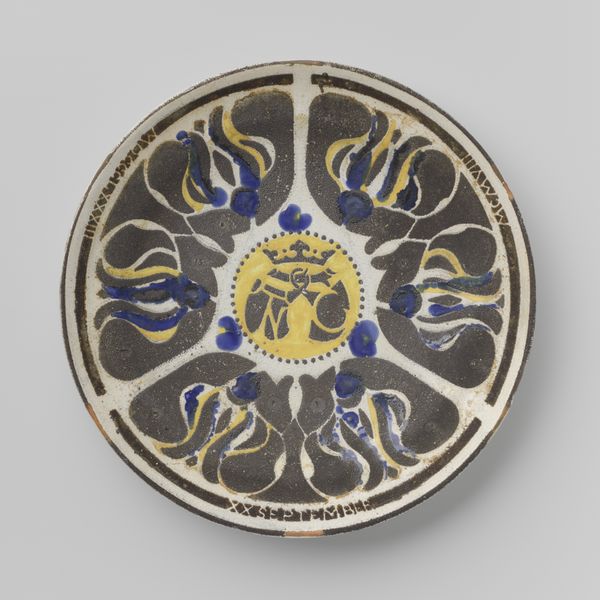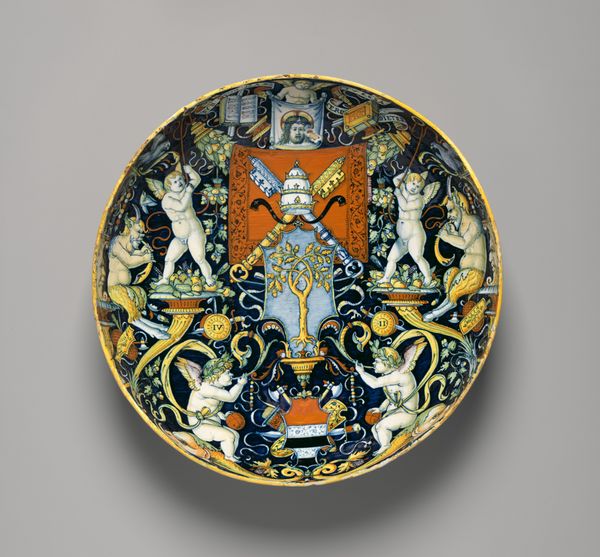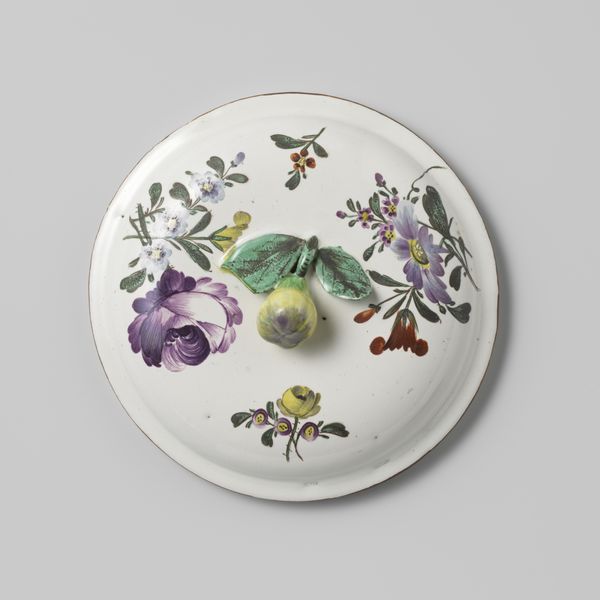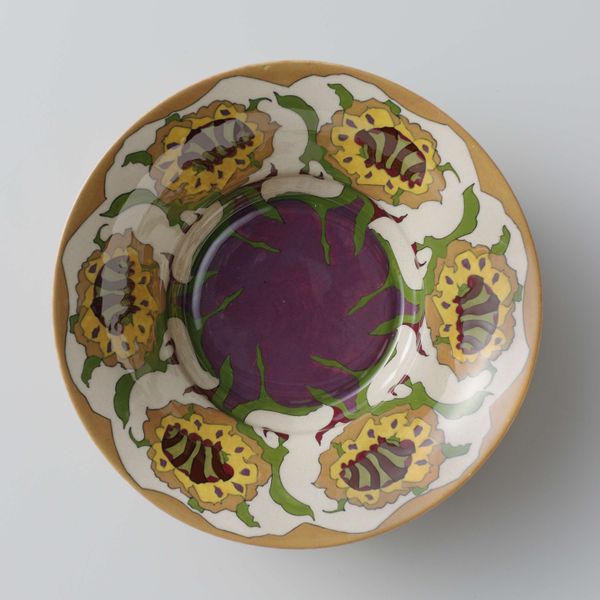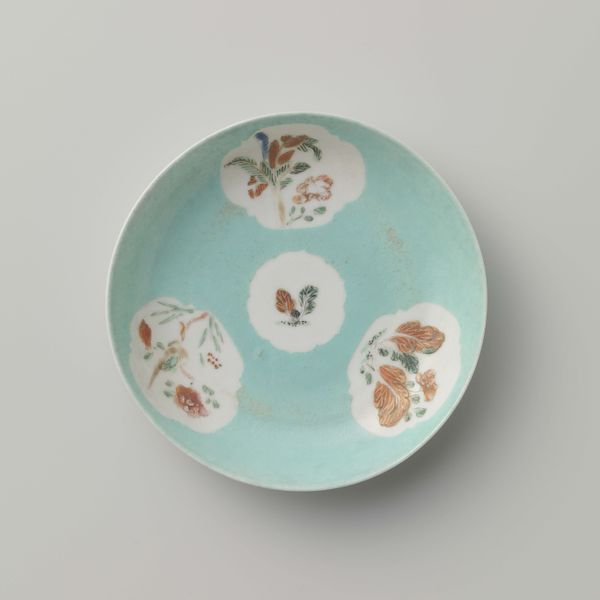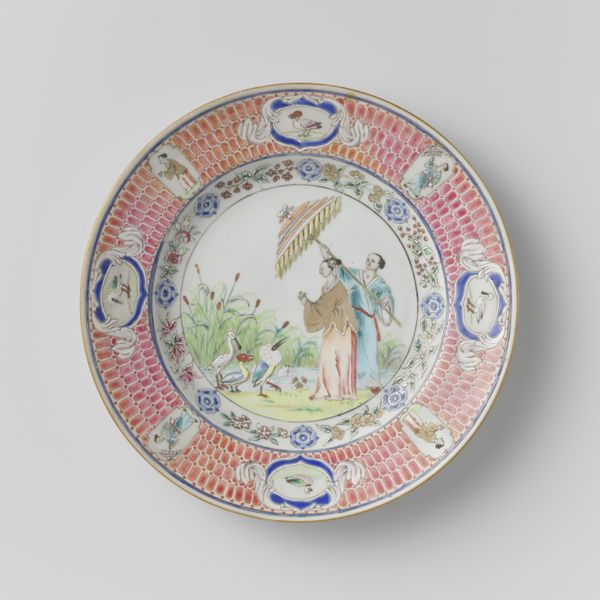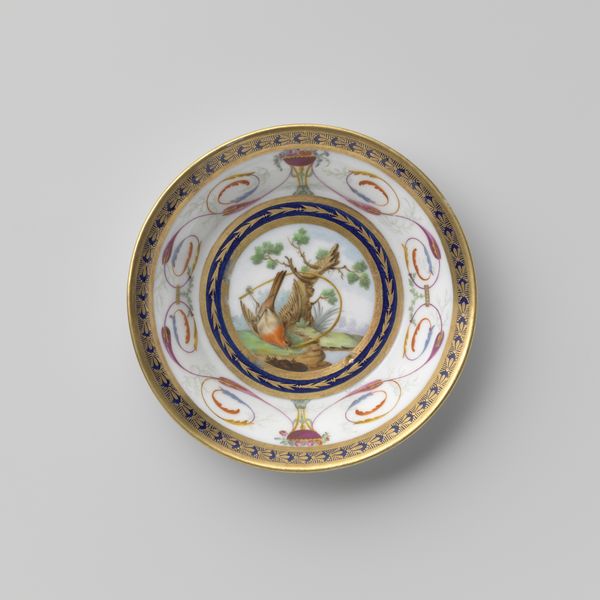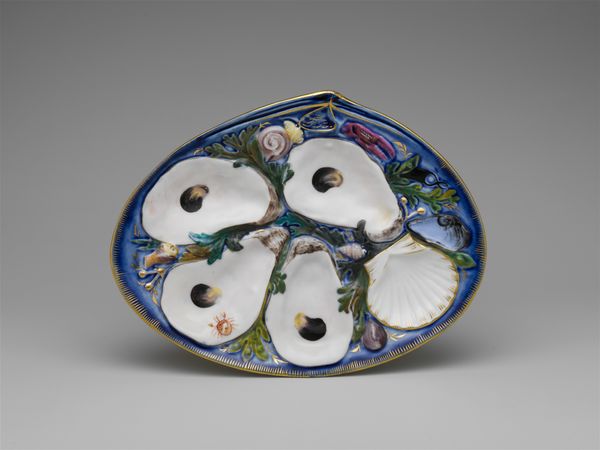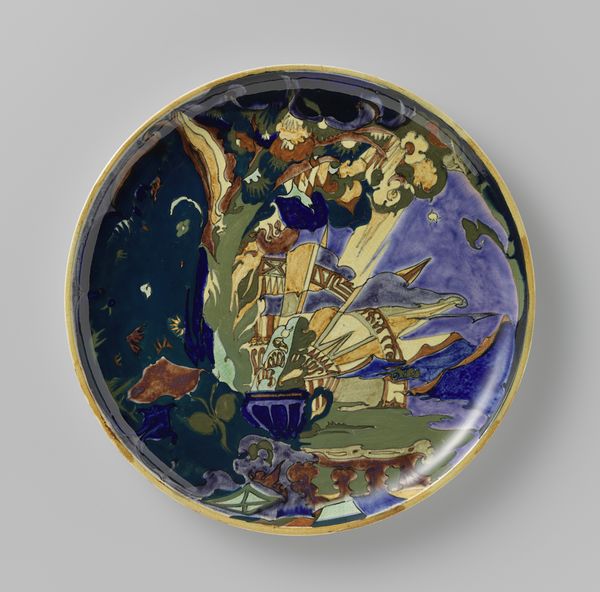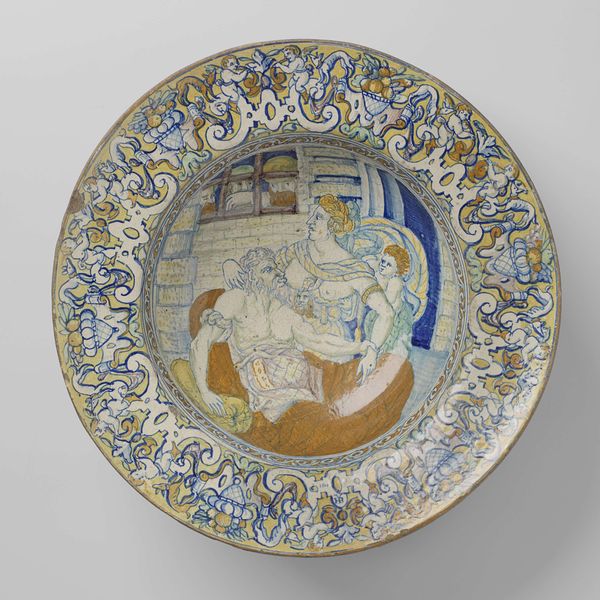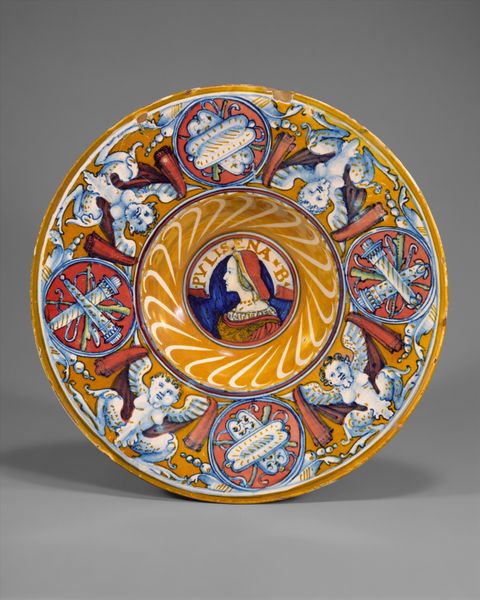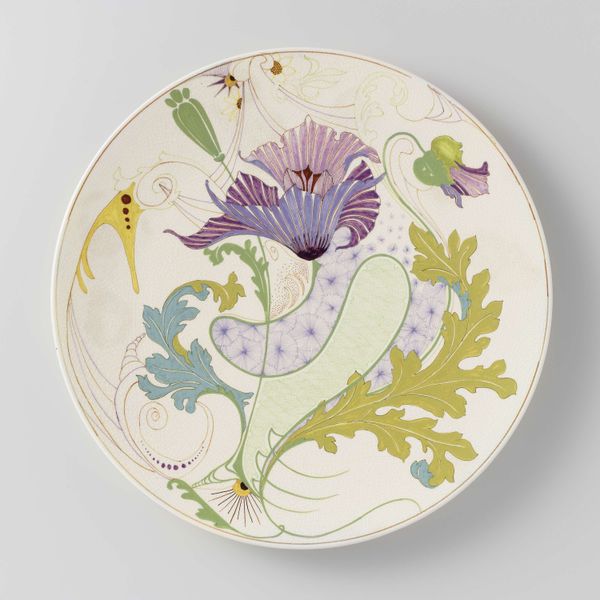
Schotel met verhoogde spiegel, polychroom beschilderd met waterverf c. 1920 - 1922
0:00
0:00
mixed-media, ceramic, watercolor
#
mixed-media
#
ceramic
#
watercolor
#
stoneware
#
ceramic
#
watercolour bleed
#
watercolour illustration
#
decorative-art
Dimensions: height 2.2 cm, diameter 16.8 cm
Copyright: Rijks Museum: Open Domain
Editor: So, this is a plate, likely dating from between 1920 and 1922, made by N.V. Plateelbakkerij Ram. It is described as using mixed-media including ceramics and watercolor, which seems an odd combination. What is your take on this piece? Curator: Well, immediately, I'm drawn to the integration of what we often separate as 'high' art and craft, especially in the early 20th century. The fact that they’re using watercolor, a medium historically associated with fine art, on ceramics forces us to reconsider that hierarchy. Who was crafting these objects, and what was their training? Were they fine artists applying their skills to mass-produced goods? Editor: That is a fascinating question. The idea of the artist's labor becoming part of everyday life... but wouldn't watercolour be a rather unusual choice on ceramic, given its… fragility? Curator: Precisely! This leads us to consider the intended use and market for such pieces. Was this purely decorative, targeting a bourgeois consumer desiring "art" in their domestic space? The materials chosen dictate a certain use, or lack thereof. What does that tell us about early 20th century ideas of functionality, design and the role of art? Editor: So the very *choice* of these materials – watercolor and ceramic, seemingly at odds – speaks volumes about the object's purpose and the cultural values around art production at the time. Curator: Exactly. The piece isn't just *what* it is, but *how* and *why* it was made using those particular processes. It points towards consumption, labor, and the breaking down of artistic boundaries. Editor: That's given me a lot to think about, especially considering the materials themselves and how they reflect the broader context of art and industry during that period. Curator: Indeed, focusing on materials can unveil subtle narratives and open broader inquiries of any object, art or otherwise.
Comments
No comments
Be the first to comment and join the conversation on the ultimate creative platform.
